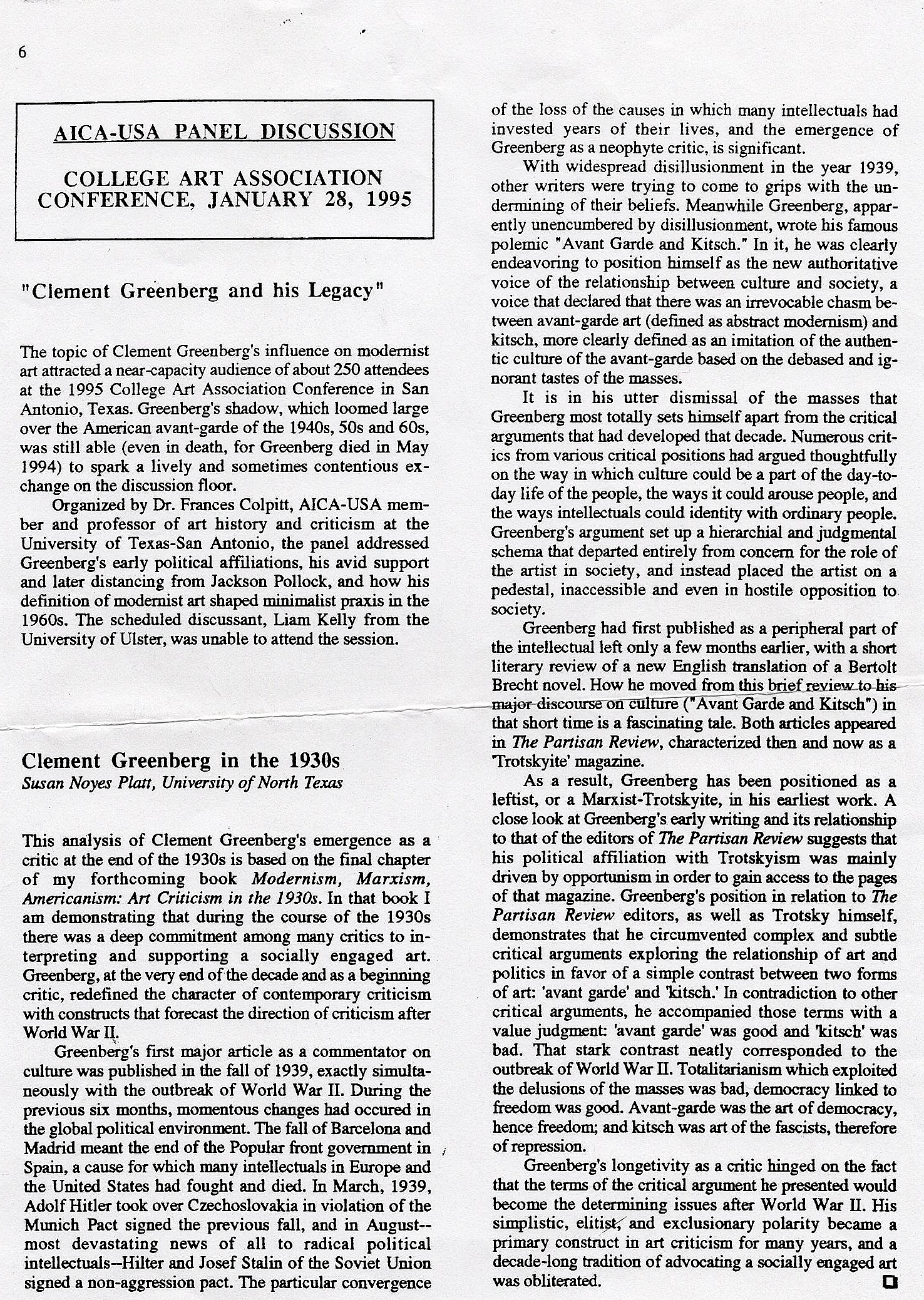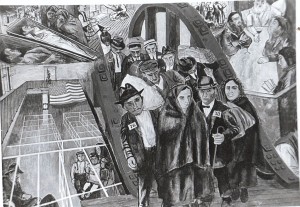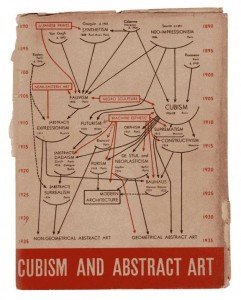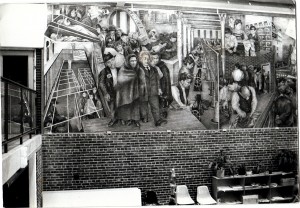Research Articles
PART I MODERNISM
One of my interests is the language of art criticism, looking at the ways in which writers analyze art, what words they chose and how they used them. Those words, in turn, frame a construction of history, particularly the history of modern art in the early twentieth century. My dissertation “Responses to Modern Art in New York in the 1920s” (UT 1981) addressed this subject. It was published as Modernism in the 1920s (UMI Research Press) available from this website.
This first article, on the now little known Sheldon Cheney, introduced the general public to the principles of modern art. Cheney sought to make it understandable, even as he adamantly rejected realism. The article included excerpts from an interview I did with Cheney in November 1979, the year before he died. It was dedicated to my father because he also sought to make esoteric ideas understandable to the general public, in his case about nature.
Sheldon Cheney Crusader for Modernism 1985
FORMALISM AND AMERICAN ART CRITICISM IN THE 1920s Art Criticism 1986 This early article demonstrates the crucial role that formal analysis played in art criticism with influential writers like Forbes Watson, Walter Pach, and Henry McBride.
MODERNISM, FORMALISM AND POLITICS: “THE CUBISM AND ABSTRCT ART” EXHBITION OF 1936,” Art Journal, Winter 1988, pp. 284 – 295. This important article is posted in two parts as the file is too large for this site.
Cubism and Abstract Art Part II
The article traces the source of our accepted history of modern art as it was enshrined by Alfred H. Barr , Jr, in the midst of the 1930s and Hitler’s assault on modern art. The diagram showing the “evolution” of modern art is of course a classic in itself.
CLEMENT GREENBERG IN THE 1930s Art Criticism Spring 1989
I have written several essays on Clement Greenberg. This article traces his roots in the late 1930s. I covered some of the same material in my book, Art and Politics in the 1930s (available from this website) in which I devoted a chapter to Clement Greenberg and the way in which he, in partnership with other writers on the Partisan Review, succeeded in turning the Marxist/Communist analysis of the 1930s into its opposite, formalist analysis of color and shape as an end in itself. In particular, he misinterpreted Trotsky.
Here is a summary of that presented at CAA in 1995

MYSTICISM IN THE MACHINE AGE JANE HEAP AND THE LITTLE REVIEW Twenty /One, Art and Culture, University of Illinois, Chicago, vol. 1, no.1, 1990 pp. 18-44 (a shortlived periodical)
THE LITTLE REVIEW EARLY YEARS AND AVANT-GARDE IDEAS 1990 in Sue Ann Prince, ed, The Old Guard and the Avant-Garde, Modernism in Chicago 1910- 1940, University of Chicago Press, 1990, pp. 139-154
These two articles explore new aspects of the Little Review Magazine, mainly known as the first place that Ulysses by James Joyce was published, with the sponsorship of Margaret Anderson. Anderson’s co editor, Jane Heap was a brilliant and still not yet appreciated critic of modern art. Her radical ideas and exhibitions were eclipsed by her personal disorder and her conversion to following Gurdjieff.
PARADIGMS AND PARADOXES NATURE MORALITY AND ART IN AMERICA. Art Journal Summer 1992 This article marks the first time that I brought critical analysis into an historical context. I lost a few friends when I published this, but made many new ones.
Jersey Homesteads Mural Ben Shahn, Bernarda Bryson and History Painting in the 1930s in Redefining American History Painting, Cambridge University Press, 1995. This crucial topic of the role of murals and immigration in the work of Ben Shahn and Bernarda Bryson Shahn is still rich for further exploration.

Bryson identified several figures in the sketch which is quite different from the final mural. Ben Shahn’s mother maybe the woman at the front, Raphael Soyer to her left. Einstein is here in the back (moved up in the final mural).
GAMBLING FENCING AND CAMOUFLAGE HOMER ST. GAUDENS AND THE CARNEGIE INTERNATIONAL 1922-1950
International Encounters,Carnegie Museum of Art, 1996
This commissioned article explores the mid century conversion of the Carnegie International Exhibition from a backwater of academic cronies, to a trend setting international exhibition.
ELIZABETH MCCAUSLAND ART POLITICS SEXUALITY
in Katy Deepwell, ed.,Women and Modernism, (Manchester University Press, 1998). pp.83-96.
Again focusing on the language of art criticism, this exploration of another critic who deserves much more attention, examines McCausland’s cloaked language in the context of her lesbian life at a time when it was illegal to be gay. McCausland’s partner for many years was Berenice Abbott.
PART II ART AND SOCIAL CHANGE
“Public Politics, Domestic Rituals, Contemporary Art by Women in Turkey, “2003 Frontiers
Intimate Violence Artists Respond to Illegal Detention and Torture
Art Social Justice and Global Activism
chap 16 Newtopia for Guernica to Guggenheim










